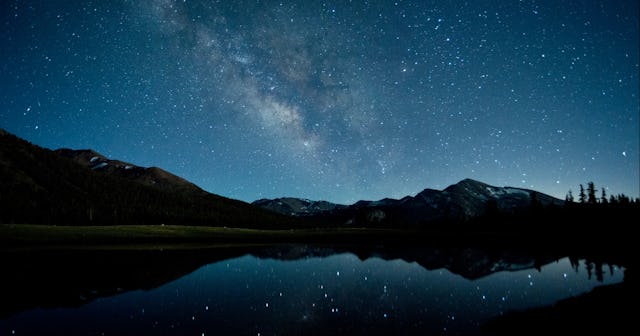11 Supremely Celestial Star Coloring Pages

We love coloring. It’s quiet and relaxing while still being a blast. Whether we’re escaping into flower coloring pages or looking for some mystery while coloring wolves, it’s all just too much fun to turn down. And there are so many educational benefits, too: hand-eye coordination, focus, and self-regulation in children. Luckily for us, it seems impossible to run out of coloring pages and activities. There’s always more out there! Sometimes it even feels like there are more coloring pages in our database than stars in the sky. But that can’t possibly be, can it? We’re not sure. What we are confident of, though, is that our collection of star coloring pages genuinely shines.
Find the darkest area you can get to, far from the city and preferably past the suburbs. Look at the night sky. Count the stars. You’ll lose count. Even if you somehow don’t lose count, you still won’t manage to fully grasp the number of stars in our solar system, and we’re not even talking about all of space. At any given hour of the night, we only see about 1000 to 1500 stars. That’s a fraction of what the universe has to offer. Our galaxy, the Milky Way, contains an estimated 100 to 400 billion stars. Can you imagine? That means scientists — with all their grants and research money and fancy-schmancy telescopes — include a 300 billion star margin of error in their research. If that doesn’t offer up a good reference for just how big and full our universe is, what can?
If you’re as obsessed with the stars and space as we are about coloring pages, you’re in luck. Below, you’ll find 10 free star coloring pages. Each one comes with some cool star facts, too (because, well, that’s just how we roll). And when you finish, keep cruising the cosmos with our collections of solar system coloring pages, astronaut coloring pages, rocket coloring pages, NASA coloring pages, and even alien coloring pages.
Free Printable Star Coloring Pages
Star No. 1
Stars get measured in numerous ways. For instance, we measure their size and brightness. When we start classifying stars by size, we use categorizations like dwarf, giant, supergiant, and hypergiant.
Star No. 2
It gets more nuanced, though. Within the smallest category of stars, dwarf stars, there are four different types: white dwarfs, brown dwarfs, red dwarfs, and yellow dwarfs. Red dwarfs (aka a star in the latter stages of life) are the most common stars in our Universe. While that’s a lot of middle-aged stars hanging around, they help scientists date our Universe from the Big Bang to now.
While you shouldn’t be taking astronomy lessons from a children’s lullaby, the song “Twinkle, Twinkle Little Star” was all kinds of wrong. That’s because stars don’t actually twinkle, it’s just an optical illusion caused by the Earth’s atmosphere.
Star No. 3
Many researchers find brown dwarfs, which are usually the size of one of our larger planets, to be the most interesting of the dwarf stars. You may hear them referred to as “failing stars” because they form when stars can’t gather enough mass to trigger nuclear reactions.
Star No. 4
After dwarf stars, there are seven kinds of large stars. They include blue giants, orange giants, red giants, blue supergiants, blue hypergiants, red supergiants, and red hypergiants.
Star No. 5
The most common type of star within our Milky Way galaxy is the red giant. However, because red giants have such low luminosity, we don’t see them with the naked eye.
Star No. 6
One of the brightest stars you’ll probably see when looking at the sky is Sirius. It’s only 8.6 light-years away and is part of the Canis Major constellation. Sirius is visible from both the southern and northern hemispheres.
Star No. 7
The closest star to Earth is Proxima Centauri. Proxima is 4.24 light-years away — or more than 24 trillion miles. Scientists estimate it would take humans 137 thousand years to reach Proxima.
Star No. 8
Another close, bright, and famous star is Vega. Vega is part of the Lyra constellation. At one point, Vega was considered our North Star. It’s also the first star (besides the sun) that researchers photographed.
Star No. 9
Arcturus is yet another extra bright star in our sky. It’s the fourth brightest, in fact, but the first brightest in the northern hemisphere. It’s part of the Boötes constellation.
Star No. 10
So, what’s the purpose of constellations? You try mapping a thousand stars. It’s hard! Astronomers used constellations as points of reference while looking at and mapping the sky. Pretty cool, huh?
Star No. 11
These stars look a lot like fireworks. This is the kind of picture that encourages kids to shoot for the moon. Fun fact: Many have visited the moon, but did you know only 12 people have walked on it? The Milky Way Galaxy is also an amazing place. It has between 100 to 400 billion stars. However, that number is always changing because new stars are constantly being born while old ones die out.
Click here to print all of the star coloring pages at once!
This article was originally published on